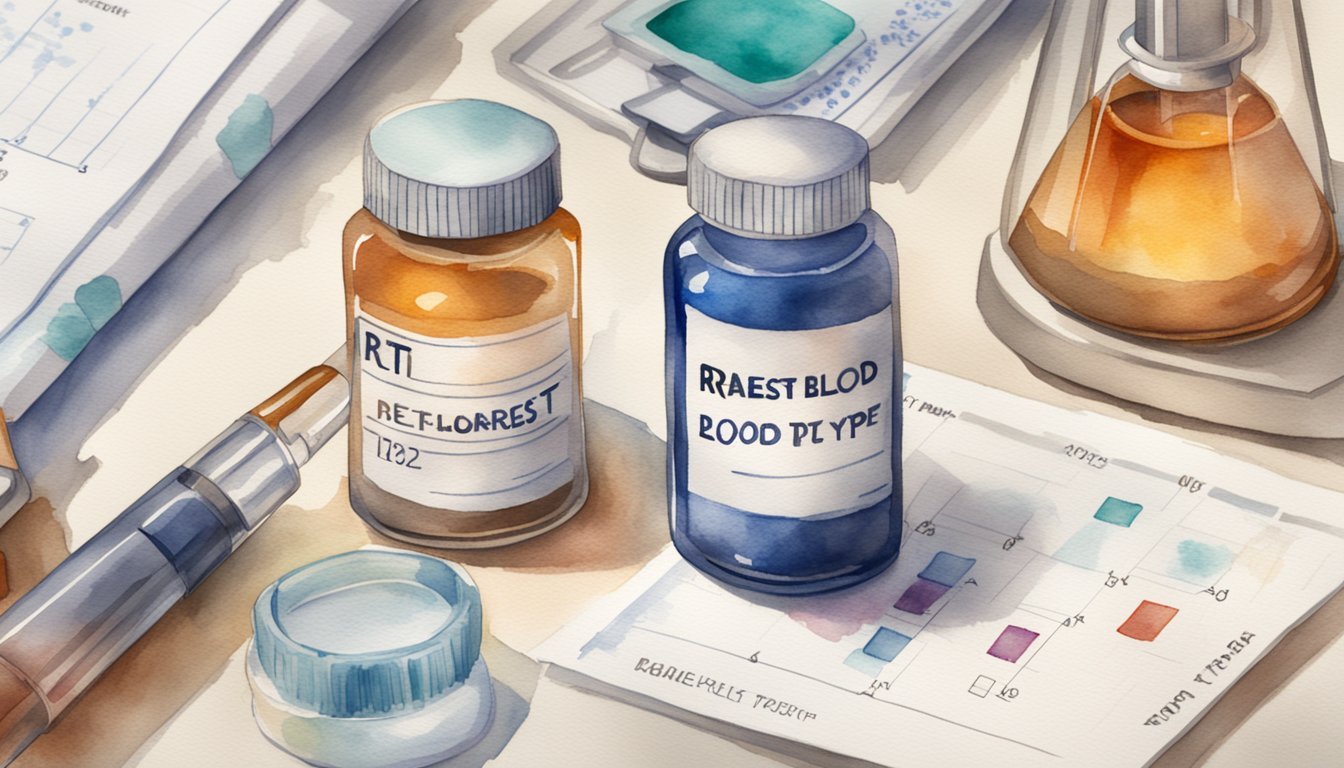Understanding Blood Types
Blood type is determined by the presence of specific antigens on the surface of red blood cells. Understanding the nuances of the ABO and Rh blood group systems is essential in fields like transfusion medicine and immunology, as it determines the compatibility of blood between donors and recipients.
ABO and Rh Blood Group Systems
The ABO blood group system classifies blood into four main types based on the presence or absence of A and B antigens on red blood cells. Type A has A antigens, Type B has B antigens, Type AB has both, and Type O has neither. The Rh system is another significant blood group system that distinguishes blood types based on the presence (Rh positive) or absence (Rh negative) of Rh antigens. The combination of the ABO and Rh system gives rise to the eight common blood types: A+, A-, B+, B-, O+, O-, AB+, and AB-.
Blood Type Distribution and Rarity
Some blood types are more common than others in different populations. For instance, O positive is the most common blood type in the United States, while types like Rhnull, known as golden blood, and AB negative are extremely rare. Rhnull, for instance, occurs in fewer than 1 in 6 million people, making it one of the rarest blood types in the world.
Blood Typing and Compatibility Testing
Blood typing testing is vital for safe blood transfusions. This test identifies an individual’s blood type and Rh factor, ensuring compatibility with the donor’s blood. Universal donors, individuals with O- blood type, can donate to any recipient, whereas universal recipients, those with AB+ blood type, can receive blood from any donor. Incompatible transfusions can trigger an immune response, potentially leading to serious complications. Therefore, healthcare professionals conduct careful blood typing tests before any transfusion is performed.
Do Genetic Similarities in Twins Impact the Rarity of Their Blood Types?
The study of twins and their genetic similarities explained in detail reveals intriguing insights into blood type rarity. Identical twins share the same genetic makeup, potentially influencing their blood types’ distribution. Consequently, understanding these genetic factors could shed light on the prevalence of specific blood types among different twin pairs.
Clinical Importance of Blood Types

Understanding blood types is crucial for safe and effective medical interventions, particularly in emergency situations and blood transfusions.
Blood Transfusions and Emergencies
Blood transfusions are a routine part of healthcare, providing lifesaving volume and components such as red blood cells, platelets, and plasma to recipients in need. The correct match of blood types between donor and recipient is paramount to prevent reactions. For instance, Type O-negative blood is considered the universal donor type for emergencies, since it can be transfused to patients of any blood type, whereas AB-positive is known as the universal recipient, able to receive blood of any type.
Genetics and Inheritance of Blood Types
Blood types are inherited, determined by specific genes from our parents. These genes dictate our ABO blood group and the presence of the Rh factor, making us Rh positive or negative. Inheritance patterns follow Mendelian principles where certain blood types, like the O gene, can be recessive, meaning both parents may carry the trait without expressing it themselves.
Blood Type and Health Considerations
Beyond transfusions, blood types may influence susceptibility to certain health conditions. For example, some studies have suggested that individuals with Type O blood may have a lower risk for certain heart conditions, but could be more susceptible to hemolytic anemia. Healthcare providers can consider blood type as one of many factors in a patient’s overall health profile.
Donating and Receiving Blood
The process of donating blood is critical to maintaining the blood supply for medical needs. Centers like the Stanford School of Medicine Blood Center and organizations like the American Red Cross encourage people to donate blood regularly. Matching donors with recipients is a careful process to ensure compatibility, as receiving incompatible blood can lead to life-threatening reactions due to antagonism between the donor’s and recipient’s immune systems.

